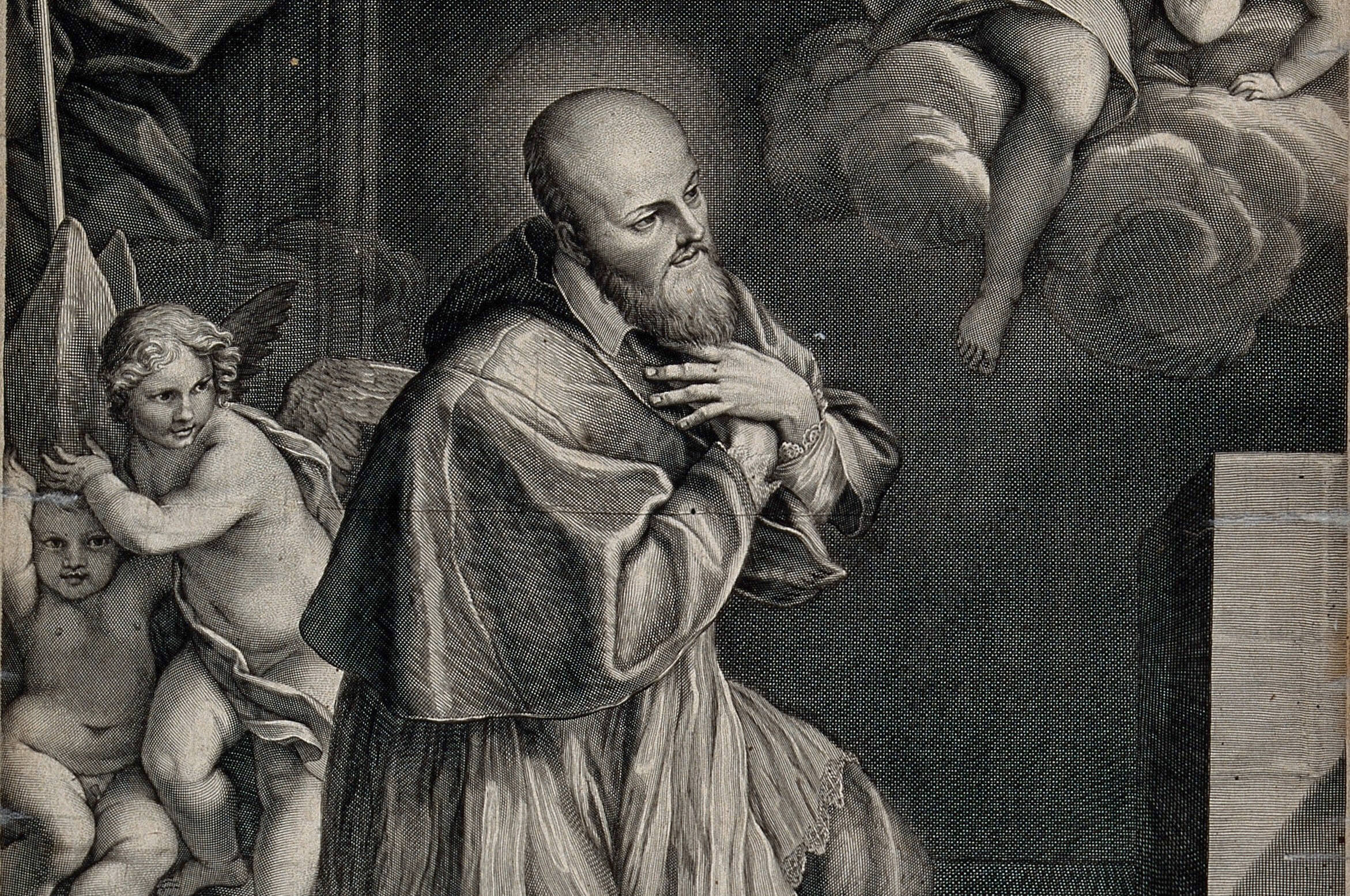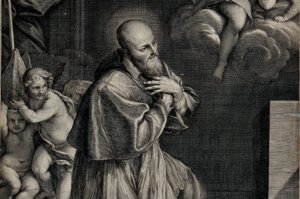A Spoonful of Honey
Four hundred years ago tomorrow, on December 28, 1622 a great teacher of the spirituality, and the patron Saint of journalists and of the Catholic press, died in Lyon, east-central France: St. Francis de Sales, Bishop and Doctor of the […]


Four hundred years ago tomorrow, on December 28, 1622 a great teacher of the spirituality, and the patron Saint of journalists and of the Catholic press, died in Lyon, east-central France: St. Francis de Sales, Bishop and Doctor of the Church.
He was born 55 years earlier in Thorens, southeastern France, on August 21, 1567, into an ancient and noble family of Savoy. After his higher studies in Paris and degrees in utroque iure (canon law and civil law) at the University of Padua, he left his brilliant career as a lawyer, was ordained a priest at the age of 26 and at 35 became Bishop of Geneva, south-western Switzerland. Dedicated to preaching, he left a large amount of writings (Introduction to a Devout Life, and The Treatise on the Love of God are his main works) and a significant pastoral undertaking:
through his zeal, exhortations, and advice strategies were often developed by which entire regions were purged of the plague of heresy, Catholic worship was restored, and religion was enhanced.[1]
Even to the Calvinists, who dominated the province of Chablais, on the southern shore of Lake Geneva, he must have applied his maxim that “one can catch more flies with a spoonful of honey than with a hundred barrels of vinegar.”[2] St. Francis de Sales is, in the words of another Pontiff, “the wisest guide of souls.”[3] Therefore, some great saints of the seventeenth century have him as their spiritual director. From him many religious congregations, including the Salesians founded by St. John Bosco in 1859, have sought the principles and forms of the spiritual life.
The Vatican Philatelic and Numismatic Office dedicated to him a 20 euro gold coin and thus let us approach “the gem of Savoy,” as Pope Paul VI recalled him, in our usual way, through our passion for music, which the Saint, as a good connoisseur, was inclined to esteem.[4] His interest in the art of musical sounds was certainly reawakened in Rome in 1599, where, thanks to Blessed Juvenal Ancina († 1604), his friend, poet, musician and later Bishop of Saluzzo, he heard the Laudes sung in the Oratory of Santa Maria in Vallicella; in Milan in 1613, where he listened to sacred music performed in female convents:
Being two years ago at Milan, whither the veneration of the recent memory of the great Archbishop St. Charles had drawn me, with some of our clergy, we heard in different churches many sorts of music: but in a monastery of women we heard a religious whose voice was so admirably delightful that she alone created an impression more agreeable, beyond comparison, than all the rest together, which though otherwise excellent, yet seemed to serve only to bring out and raise the perfection and grace of this unique voice.[5]
Francis himself composed some melodies for his Visitandines:
he himself took a breviary and a pen, and began to sing and write the notes: thus, together with the Mother [St. Jane Frances de Chantal], composed the song that we still have, on which our first Mothers and Sisters began to sing the little Office of Our Lady.[6]
The two-part oratorio San Francesco di Sales, apostolo del Chablais, composed by Francesco Feo († 1761) on a libretto by Nicolò Coluzzi (18th century), is dedicated to the holy Bishop of Geneva.
Although poorly known, the musician is one of the most eminent of the Neapolitan musical school, an erudite composer and highly skilled teacher, who had among his pupils Giovanni Battista Pergolesi († 1736) and Niccolò Jommelli († 1774). “The few specimens which I have seen of this composer’s abilities in vocal music,” wrote the English musicologist Charles Burney († 1814) of Feo, “seem correct and masterly in counterpoint, and full of fire, invention, and force in the melody and expression of the words.”[7]
After its first performance, which took place on January 24, 1734 at Bologna, in the Church of the Madonna di Galliera of the Oratorian Fathers, San Francesco di Sales apostolo del Chablais was widely circulated with repeat performances in Rome on November 22, 1734, at Genoa in 1736 and in 1775, at Città di Castello in 1737, at Venice in 1741 and 1746, at Foligno in 1742 and at Spoleto in 1745.[8] The score includes four solo voices (Angel and Heresy, sopranos; Saint Francis, alto; Deceit, bass), a small chorus and an orchestra comprising trumpets, oboe, strings and continuo (improvised harmonic support for the harpsichord combined with the cello). In two hours and a quarter of music the holy Bishop of Geneva is presented to us not in a dramatic action, but in dialogues: the allegorical figures of Heresy, assisted by Deceit, on one side and on the other the protagonist, supported by Angel.
May this Doctor of divine love and evangelical gentleness help us to transform the Gospel read into the Gospel lived, according to the beautiful image he used:
What is the life of a saint if not the Gospel in action? There is no more difference between the written Gospel and the life of the saints than between music written and music sung.[9]
[1] Pius IX, Dives in misericordia, November 16, 1877.
[2] Jean-Pierre Camus, The Spirit of St. Francis de Sales, ed. and trans. C.F.Kelley, Harper & Brothers, New York 1952, p. 23.
[3] Benedict XIV, Pastoralis curæ, August 5, 1748, n. 8.
[4] Paul VI, Sabaudiæ gemma, January 29, 1967.
[5] St. Francis de Sales, Treatise on the Love of God, Cosimo Classics, New York 2007, p. 225.
[6] Année Sainte des Religieuses de la Visitation-S. Marie, Annecy 1868, VI, p. 208, our translation.
[7] C. Burney, A general history of music, New York 1957, II, p. 919.
[8] Cf. C. Sartori, I libretti italiani a stampa dalle origini al 1800, I-IV, Cuneo 1991.
[9] Œuvres de Saint François de Sales…: Lettres, Vol. 12, Annecy 1902, p. 306.














